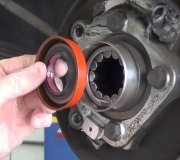Hi Harrison1,
Thank you for the donation.
To adjust the handbrake you need to remove the center console to get to the adjusting nut near the lever.
For disc pad replacement, there is no necessity to release cable tension.
Here are the procedures.
REPLACEMENT
1. Remove some brake fluid from the master cylinder.
2. Raise the rear of the vehicle, and support it with safety stands in the proper locations .
3. Remove the rear wheels.
4. Remove the flange bolts (A) while holding the caliper pin (B) with a wrench being careful not
to damage the pin boot, and remove the caliper (C). Check the hose and pin boots for damage
and deterioration.

5. Remove the brake pads (A) and the pad shim (B).
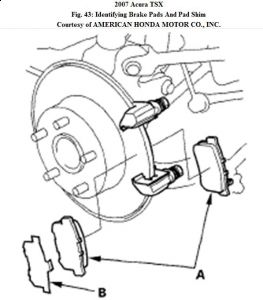
6. Remove the pad retainers (A).
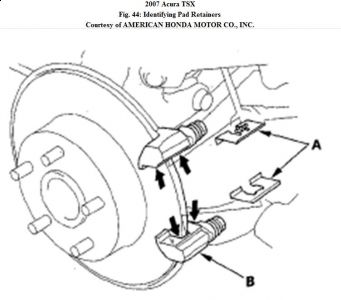
7. Clean the caliper bracket (B) thoroughly; remove any rust, and check for grooves and cracks.
8. Inspect the brake disc, and check for damage and cracks.
9. Apply a thin coat of M- 77 assembly paste (P/N 08798 - 9010) to the retainers on their mating
surfaces (indicated by the arrows) against the caliper bracket (B).
10. Install the pad retainers. Wipe excess assembly paste off the retainers. Keep the assembly
paste off the brake disc and brake pads.
11. Apply a thin coat of M- 77 assembly paste (P/N 08798 - 9010) to both sides of the pad shim (A),
the back of brake pads (B), and the other areas indicated by the arrows. Wipe excess assembly
paste off the pad shims and pads. Contaminated brake discs or pads reduce stopping ability.
Keep grease and paste off the brake discs and pads.
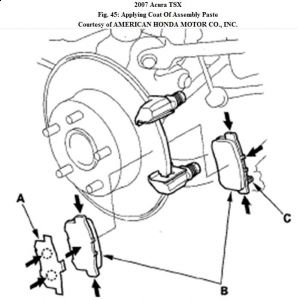
12. Install the brake pads and pad shims correctly. Install the brake pad with the wear indicator (C)
on the bottom inside. If you are reusing the brake pads, always reinstall the brake pads in their
original positions to prevent a momentary loss of braking efficiency.
13. Rotate the caliper piston (A) clockwise into the cylinder, then align the cutout (B) in the piston
with the tab (C) on the inner pad by turning the piston back. Lubricate the boot with rubber
grease to avoid twisting the piston boot. If the piston boot is twisted, back it out so it is
positioned properly.
NOTE: Be careful when moving the piston back in the caliper; brake fluid might overflow from the master cylinder's reservoir.
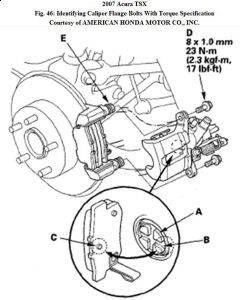
14. Install the caliper. Install the flange bolts (D), and tighten it to the specified torque while holding the caliper pin (E) with a wrench being careful not to damage the pin boot.
15. Clean the mating surfaces of the brake disc and the inside of the wheel, then install the rear wheels.
16. Press the brake pedal several times to make sure the brakes work.
NOTE: Engagement may require a greater pedal stroke immediately after the brake pads have been replaced as a set. Several applications of the brake pedal will restore the normal pedal stroke.
17. Add brake fluid as needed.
18. After installation, check for leaks at hose and line joints or connections, and retighten if
necessary. Test-drive the vehicle, then recheck for leaks.
Saturday, August 22nd, 2009 AT 10:56 AM





